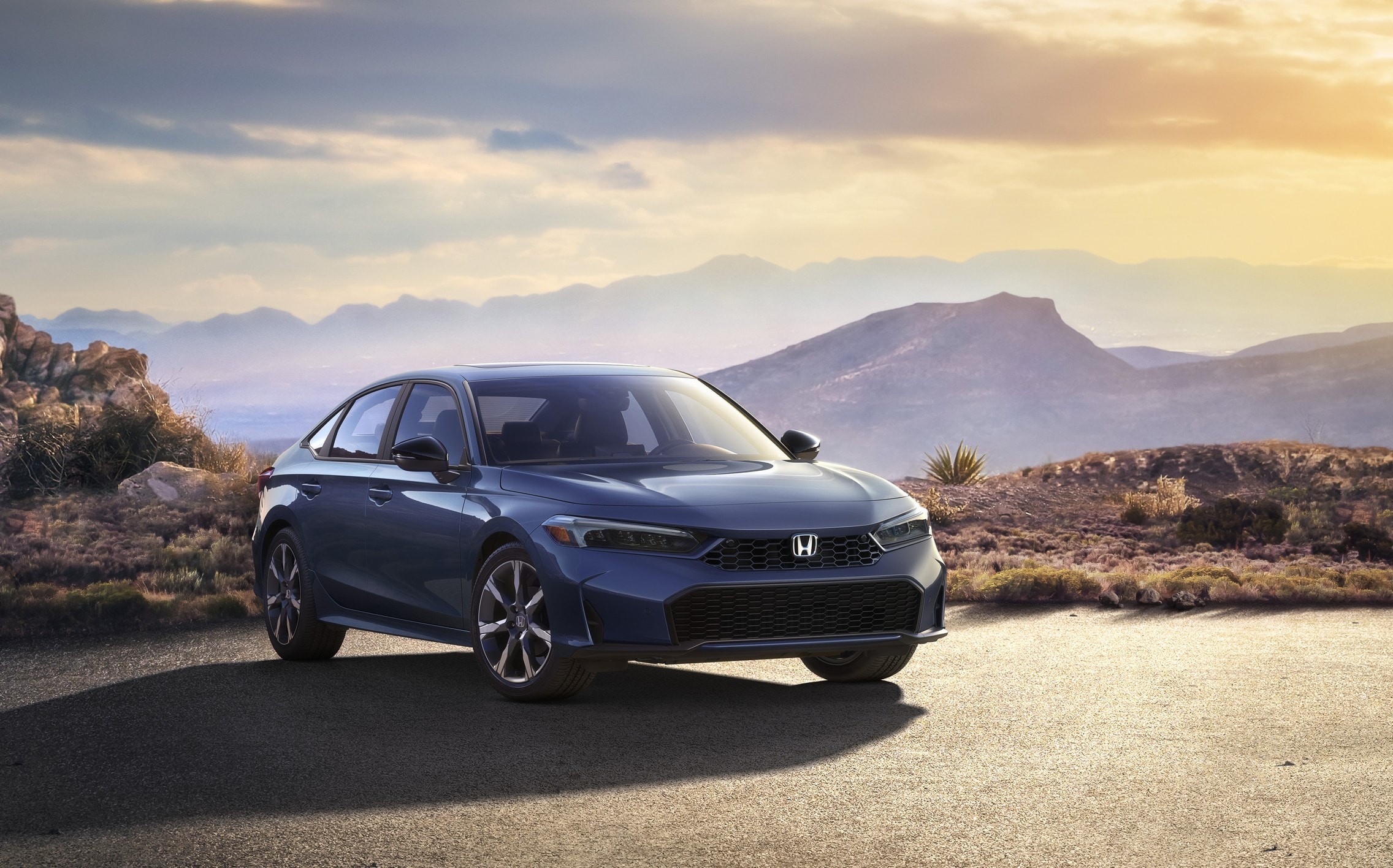Hybrid vehicles were once a niche choice, but today, they’ve become a mainstream solution for drivers who want fuel efficiency without going fully electric. And while hybrid tech has come a long way, not all hybrids are created equal.
Some are marvels of engineering that can clock 300,000 miles and beyond, providing dependable transportation with minimal fuss. Others, however, promise eco-friendly performance but fall apart long before reaching six digits on the odometer.
In this comparison, we’re looking at both sides of hybrid reliability. On one side are the hybrids that truly stand the test of time—models with proven track records, durable battery systems, and low lifetime maintenance costs.
These vehicles often outlast their gas-only counterparts, making them ideal for high-mileage drivers and long-term ownership.
On the other side are hybrids that didn’t hold up to real-world expectations. These are the ones plagued with battery failures, drivetrain issues, or fragile components, often turning into expensive headaches before their fifth birthday.
Whether you’re shopping for a used hybrid or considering a new one for long-term use, this guide will show you which models are worth investing in—and which ones may become early landfill material.
Also Read: 5 Cars That Routinely Cross 400K Miles and 5 That Break at 100K
5 Hybrids That Survive the Long Haul
There was a time when hybrids were viewed as a gamble—unproven tech, strange driving dynamics, and expensive batteries made many drivers hesitant to trust them long-term.
But as years passed, a select group of hybrid models proved not only that they could go the distance, but that they could do it with fewer breakdowns than many conventional vehicles.
In fact, some hybrids have emerged as some of the longest-lasting cars ever made, routinely passing the 200,000- or even 300,000-mile mark without major issues.
The key to their success lies in conservative engineering and real-world reliability. These long-haul hybrids often avoid fancy performance tricks and instead focus on practical, durable design.
Their engines are usually low-stress, their transmissions are simplified, and their battery systems—often a concern for early adopters—have proven to be incredibly robust.
Add in regenerative braking that extends brake life, fewer wear points thanks to electric-assist driving, and lower average fuel costs, and you’ve got a recipe for long-term savings.
We’re highlighting these vehicles not because they’re flashy or cutting-edge, but because they’ve earned the trust of high-mileage commuters, rideshare drivers, fleet operators, and frugal families.
These are the hybrids that you still see on the road after a decade or two of daily duty, quietly and efficiently doing their job.
Each vehicle in this list has been chosen based on owner reports, industry reliability rankings, and service history patterns, with a focus on models that have minimal long-term issues.
Whether you’re looking for a commuter car that won’t let you down or a used hybrid that won’t leave you stranded, these five vehicles offer the kind of dependability that makes the hybrid gamble a proven long-term win.
1. 2004–2009 Toyota Prius (2nd Generation)
When the second-generation Toyota Prius hit the market in 2004, it didn’t just update the look of the original hybrid—it redefined public perception of what a hybrid could be.
With its distinctive wedge shape and futuristic design, it became a cultural and automotive milestone. But what really set it apart wasn’t its fuel economy or styling—it was its remarkable reliability.
The 2004–2009 Prius was equipped with Toyota’s Hybrid Synergy Drive, a system that was years ahead of its time.
The electric motor, gasoline engine, and planetary gear-based continuously variable transmission worked together seamlessly, and unlike many experimental drivetrains of the era, this one almost never broke down.
The electric motors were durable, the gas engine was understressed, and the battery pack—long feared as a weak point—often lasted over 200,000 miles, with many owners hitting 300,000+ on the original pack.
One reason for this long life is Toyota’s conservative engineering. The Prius doesn’t rev high or stress components. Instead, it glides along efficiently, with regenerative braking preserving brake life and the gas engine shutting off when it’s not needed.
The result is less wear and tear on nearly every system. Owners often report doing little more than changing the oil, replacing tires, and swapping a 12V battery every few years.
Beyond the drivetrain, the 2nd-gen Prius is surprisingly simple. The interior isn’t fancy, but it’s functional. The infotainment is basic, and the climate controls rarely fail.
Because of its widespread popularity, parts are cheap and mechanics are familiar with it, making long-term ownership affordable.
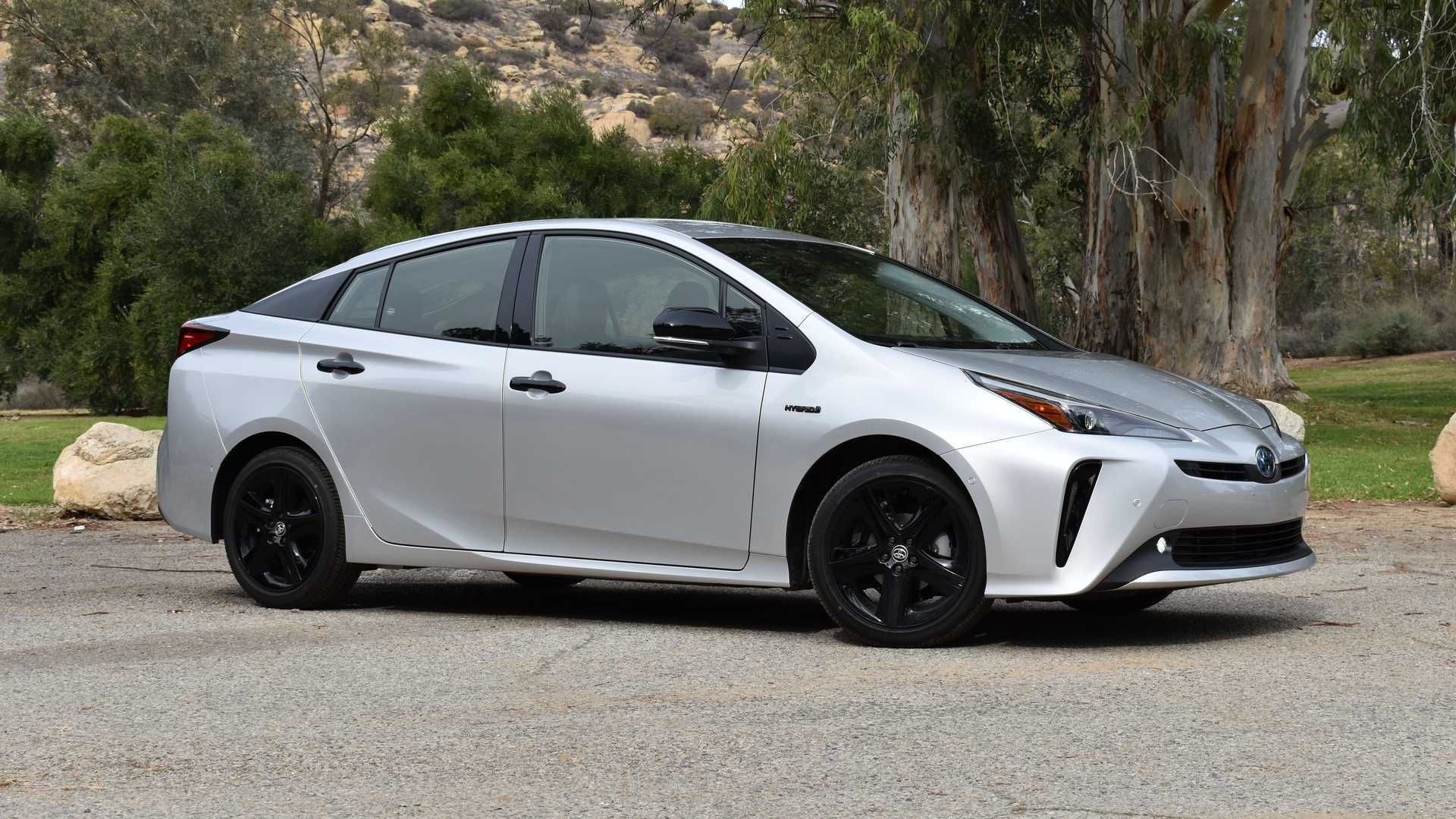
We’re including the 2004–2009 Prius not because it’s exciting to drive, but because it set the gold standard for hybrid durability. In rideshare fleets, government service, and everyday households, these cars have proven to be virtually unkillable.
If you find one that’s been maintained—especially in a dry climate—it’s not unreasonable to expect it to last another 100,000 miles.
In a world where hybrids were once viewed as fragile experiments, the second-gen Prius stood tall and became the first truly bulletproof hybrid. It didn’t just survive—it led the hybrid revolution with quiet, mechanical confidence.
2. 2010–2015 Lexus RX 450h
Luxury and longevity don’t always go hand-in-hand, especially when hybrids are involved. But the 2010–2015 Lexus RX 450h is a rare exception—a midsize luxury SUV that pairs Toyota’s hybrid reliability with Lexus build quality to create a vehicle that’s not only smooth and quiet, but also surprisingly durable well past 200,000 miles.
Under the hood is a proven system: a 3.5L V6 engine paired with Toyota’s Hybrid Synergy Drive, which includes two electric motors and an eCVT.
This system is nearly identical in structure to the one used in the Toyota Highlander Hybrid, but Lexus gave it a more refined driving experience.
Despite its premium intentions, the RX 450h keeps things mechanically conservative—no turbos, no complex dual-clutch setups, and minimal direct injection complications, which makes a big difference in long-term maintenance.
The hybrid battery pack? It’s a nickel-metal hydride unit that has proven to be highly resilient over time. Many RX 450h owners report original batteries still performing well after 12–15 years, even with daily commuting and occasional towing.
The all-wheel drive system, which uses a separate electric motor for the rear axle, is cleverly simple and virtually maintenance-free.
What really helps this vehicle stand the test of time is Lexus’ obsessive focus on build quality. From the soft-close doors to the tight panel gaps and durable interior materials, the RX 450h feels solid even after 100,000+ miles.
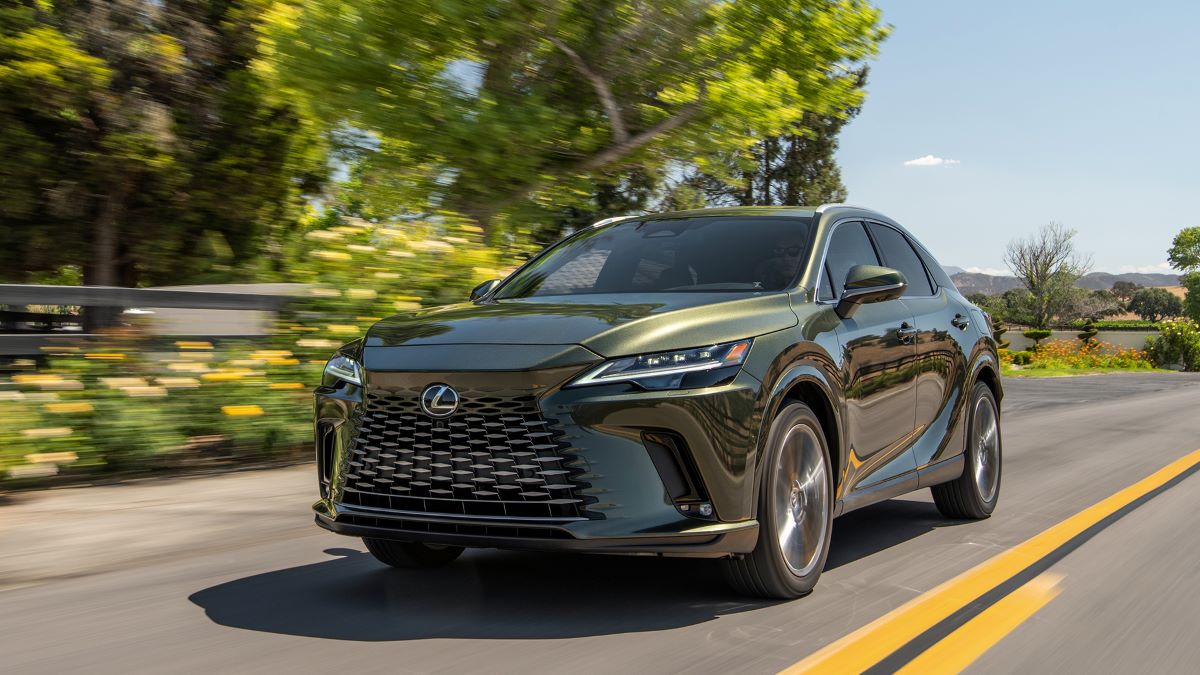
Buttons don’t fade, the leather holds up, and the electronics—unlike many rivals—tend to keep working long after the warranty ends.
We’re including the RX 450h because it’s proof that you don’t have to sacrifice comfort or performance to get long-term reliability from a hybrid.
Whether you’re a retiree looking for a set-it-and-forget-it ride, or a family needing dependable transportation with great fuel economy, this Lexus offers both.
It’s not uncommon to find these on the used market with over 200,000 miles and still running strong—a rare feat for any luxury SUV, let alone a hybrid.
If longevity is your goal and luxury is your preference, the RX 450h is a hybrid you’ll be happy to keep for the long haul.
3. 2012–2017 Toyota Camry Hybrid
The 2012–2017 Toyota Camry Hybrid blends Toyota’s hybrid expertise with America’s favorite sedan formula—making it one of the most quietly dependable long-haul hybrids ever built.
If you’re looking for a car that’s comfortable, efficient, and built to go the distance, the Camry Hybrid from this era delivers on all counts, often with barely any drama or repair bills.
Powering this model is a 2.5L Atkinson-cycle 4-cylinder engine paired with Toyota’s Hybrid Synergy Drive and an eCVT transmission. This setup is practically identical to the one in the Prius but tuned for more performance and installed in a slightly larger, more traditional body.
The result is a car that returns 40+ mpg in real-world driving, yet offers brisk acceleration, a quiet ride, and a drivetrain that regularly passes 250,000 miles with basic maintenance.
The hybrid battery is a nickel-metal hydride unit, and like most Toyota packs, it’s impressively reliable.
Many Camry Hybrids retain their original battery packs well beyond 150,000 miles, and replacements—when needed—are now more affordable due to wide availability of remanufactured or new options.
Where this hybrid shines is in its total cost of ownership. Brakes last longer due to regenerative braking. Oil changes are straightforward. There’s no turbo to fail, no direct injection system to carbon up, and no complex AWD hardware to worry about.
That’s why this Camry is a favorite for Uber and taxi fleets, as well as families and commuters who want decade-long dependability without luxury-car costs.
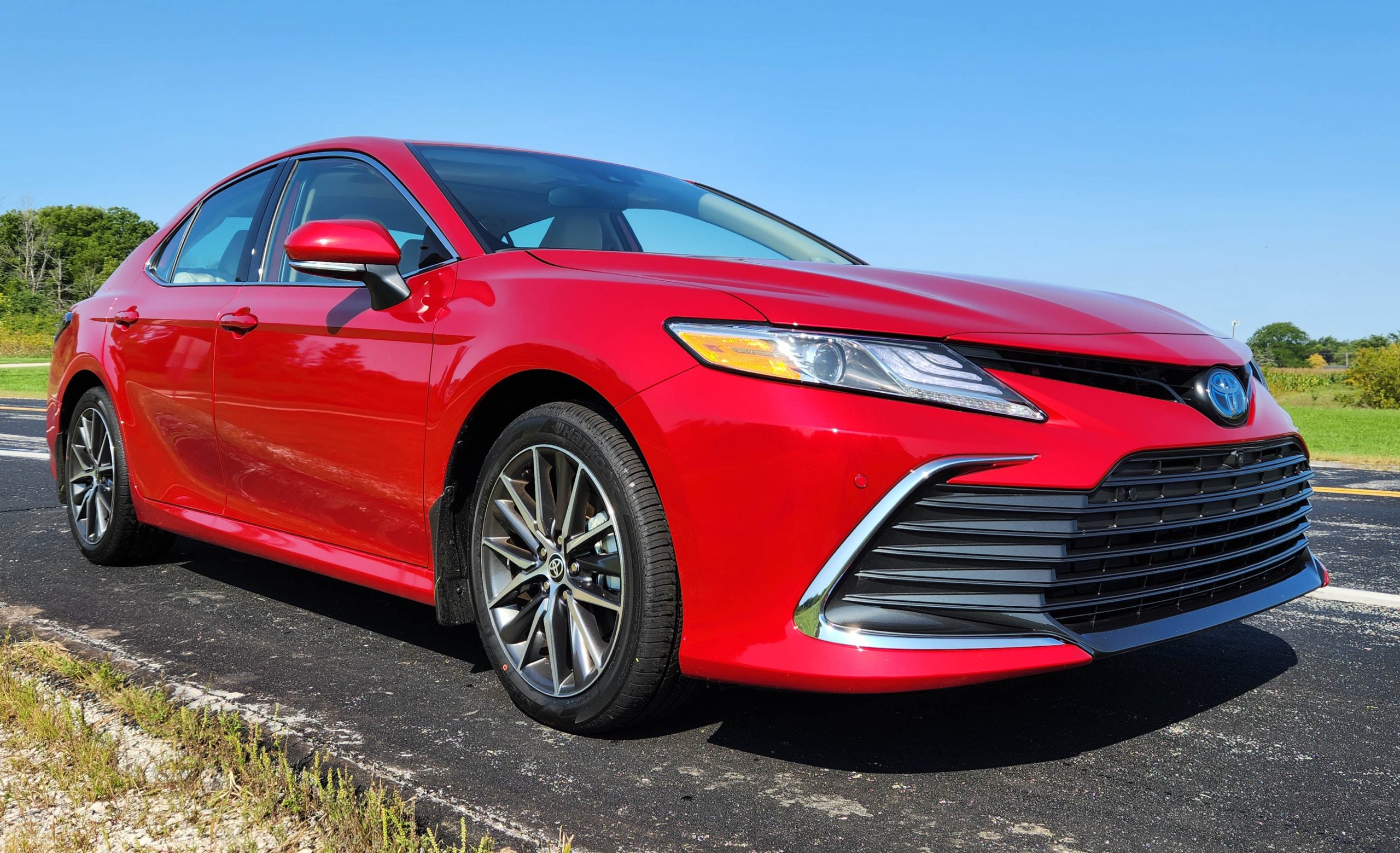
Interior quality, while not upscale, is practical and durable. Seats resist wear, controls are logically laid out, and the infotainment—though simple—doesn’t suffer the glitches found in some competitors.
We’re including the 2012–2017 Camry Hybrid because it represents the most balanced hybrid option for budget-conscious long-term owners. It doesn’t have the Prius’s quirky styling or the Lexus RX’s plush interior, but it has just enough of everything—and nearly zero surprises.
If your goal is a midsize sedan that won’t nickel-and-dime you into frustration over time, this Camry Hybrid is one of the smartest long-haul picks you can make.
4. 2007–2011 Honda Civic Hybrid (With Caveats)
The 2007–2011 Honda Civic Hybrid isn’t often the first name that comes up in hybrid longevity discussions, largely because it had a rocky start.
But here’s the truth: when properly maintained and selected from the right production batch, this Civic Hybrid can run well into the 200,000+ mile range—making it one of Honda’s most understated long-distance performers.
Powered by Honda’s Integrated Motor Assist (IMA) system and a 1.3L i-VTEC engine, the Civic Hybrid uses a smaller, simpler setup than Toyota’s system.
Unlike Toyota’s full hybrid layout, IMA functions more like an electric booster system, with the gas engine always in use. This design has fewer parts to fail, though it comes with its own quirks—especially when it comes to the battery.
Early models in this generation (especially 2006–2008) suffered from premature battery degradation, resulting in reduced fuel economy and poor assist performance.
However, Honda quietly improved the software, cooling systems, and battery quality by 2009 and later. Vehicles from 2009 to 2011—especially those with updated battery packs—have proven to be remarkably consistent and economical to own.
One reason the Civic Hybrid survives the long haul is its Honda roots. The chassis is light, the engine is under-stressed, and the overall build quality is classic Honda: efficient, precise, and focused on real-world use.
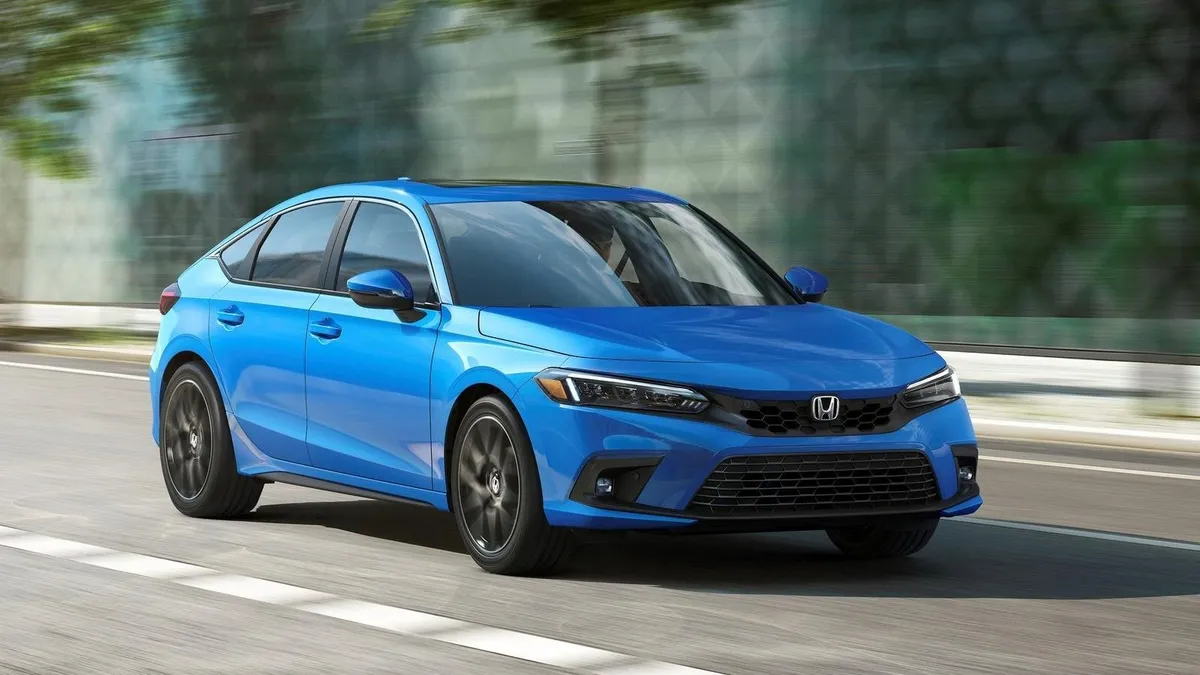
Oil changes, spark plugs, and transmission fluid swaps are easy and affordable. Combine that with smooth driving characteristics and a comfy interior, and this hybrid becomes a favorite among drivers who need an efficient daily commuter with proven Japanese dependability.
We’re including this car on our list because it represents a solid hybrid ownership experience—when you buy smart.
Avoid the early years or make sure the battery was replaced or updated. Do that, and you’ll have a hybrid that quietly logs hundreds of thousands of miles, offering real savings in fuel and maintenance.
The Civic Hybrid doesn’t shout about its capabilities. It just keeps going, and for many hybrid shoppers looking at the used market, that’s exactly what matters most.
5. 2007–2013 Toyota Highlander Hybrid
Most people don’t associate hybrid SUVs with long-term durability—but the 2007–2013 Toyota Highlander Hybrid flips that assumption on its head.
Blending Toyota’s legendary Hybrid Synergy Drive with the practicality of a midsize crossover, this Highlander has quietly become a high-mileage champion for families, fleet operators, and long-distance commuters.
At its heart is a 3.3L V6 engine paired with two (or three) electric motors, depending on whether it’s front-wheel or all-wheel drive.
This powertrain, shared in spirit with the Lexus RX 400h, delivers smooth acceleration, confident highway power, and real-world efficiency—typically around 25–28 mpg, even in AWD form. More impressively, it does all of this while lasting well into the 250,000+ mile range, especially when properly maintained.
Battery worries? Not here. The Highlander Hybrid uses a nickel-metal hydride (NiMH) pack that’s known for long life and excellent thermal management. It’s not uncommon to find original battery packs still functioning after more than a decade.
Even if replacement is needed, the cost has dropped considerably and availability of reconditioned units makes repair far more reasonable than many expect.
This generation Highlander also benefits from Toyota’s conservative engineering approach. There’s no turbocharging, no CVT fragility, and no fragile dual-clutch transmissions. Instead, it uses Toyota’s durable eCVT hybrid transmission, which has fewer moving parts and a long track record of success.
We’re including the 2007–2013 Highlander Hybrid because it offers the rare combination of space, safety, and longevity in the hybrid world.
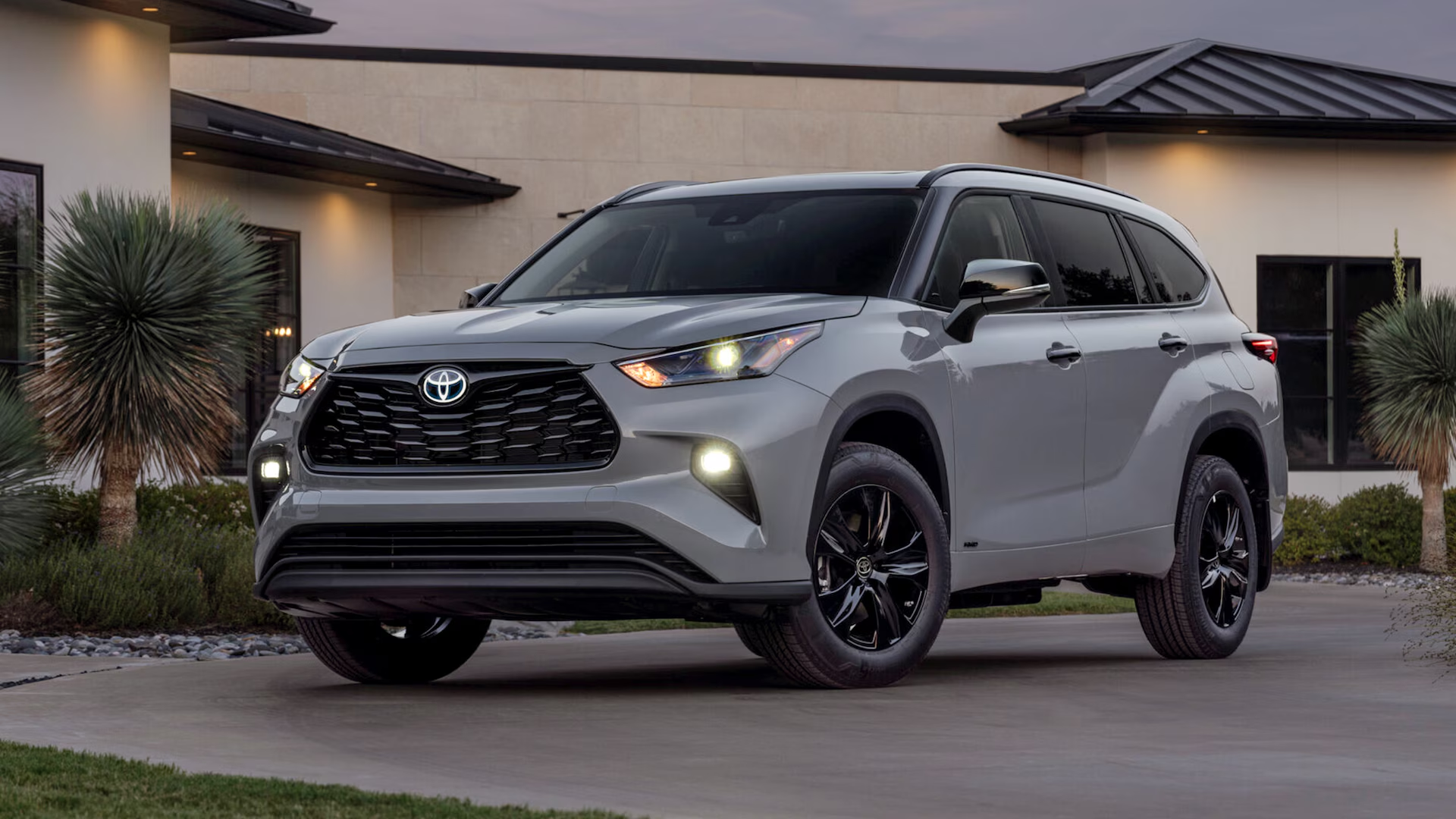
With seating for seven, loads of cargo space, and all-weather confidence, it’s ideal for families who need something more than a compact commuter car—but don’t want to sacrifice reliability or efficiency.
Owners frequently report minimal repairs beyond standard maintenance. Brake life is extended thanks to regenerative braking, and many find themselves still on original drivetrain components past 200,000 miles.
If you’re looking for a hybrid that can haul kids, groceries, and still hit long-haul numbers, the Highlander Hybrid isn’t just a great option—it’s one of the few true SUV hybrids built to endure the long road ahead.
5 Hybrids That Become Junk Early
Hybrid technology has come a long way—but that doesn’t mean every automaker got it right. In the rush to cash in on the growing eco-conscious market, some manufacturers released hybrids that were either poorly engineered, rushed to production, or simply too complex for their own good.
The result? Vehicles that fell apart faster than expected, costing owners thousands in repairs or forcing them to scrap their cars long before the 100,000-mile mark.
What makes a hybrid fail early? In some cases, it’s the battery system—unreliable chemistry, poor thermal management, or weak warranties that leave owners stuck with four-figure repair bills. In others, it’s the gasoline engine, which was either underpowered, overworked, or plagued by oil leaks and overheating.
And sometimes, it’s just bad design—overcomplicated electronics, glitchy software, or suspension components that wear out long before they should.
This section highlights five hybrids that failed to meet real-world expectations. These vehicles may have sounded good on paper—offering great mpg, slick tech, or modern looks—but in practice, they’ve become known liabilities.
They’re the models that independent mechanics dread and used car buyers should avoid unless they’re prepared for major headaches.
We’re writing about these hybrids not to scare you off from hybrid ownership entirely, but to offer a reality check. The right hybrid can save you money, time, and fuel—but the wrong one can drain your wallet faster than a V8.
These five stand out as prime examples of what happens when hybrid engineering misses the mark.
1. 2006–2009 Ford Escape Hybrid
The 2006–2009 Ford Escape Hybrid was one of the earliest mainstream hybrid SUVs on the market and looked like a win on paper. Combining Ford’s popular compact SUV body with fuel-saving hybrid tech, it offered around 30 mpg city and a practical, no-nonsense interior.
It even shared hybrid components with the well-regarded Toyota-supplied systems used in some early Ford hybrids. Unfortunately, its promising start was overshadowed by long-term reliability issues that made it a ticking time bomb for many owners.
At the heart of the problem was Ford’s adaptation of hybrid technology. While the basic layout—a 2.3L four-cylinder engine paired with an electric motor and CVT—was sensible, the execution was flawed.
The battery cooling system was underdeveloped, leading to overheating and early degradation of the hybrid battery. Replacements were expensive, and Ford’s limited support after warranty left many owners on the hook for $4,000+ repairs on vehicles worth only slightly more.
Another major pain point was the electronic power steering (EPS) system, which was known to fail unexpectedly—sometimes while driving. Replacement was costly, and no long-term fix was ever issued.
Additionally, inverter failures and high-voltage wiring corrosion became more common as these Escapes aged, particularly in humid climates or northern states with salted roads.
Even the gas engine wasn’t bulletproof. The 2.3L Duratec suffered from coolant leaks and premature water pump failures, often requiring labor-intensive repairs that could easily eclipse the vehicle’s value.
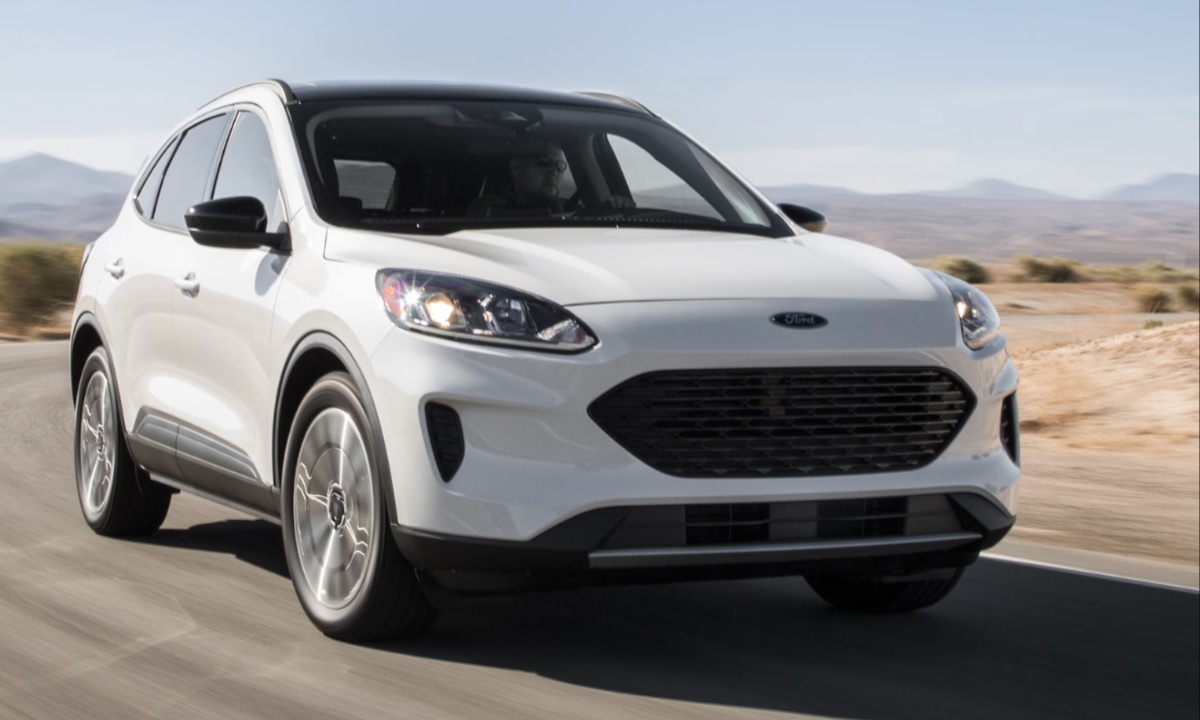
Many owners found themselves scrapping their Escape Hybrids before 100,000 miles, not because they didn’t like them, but because they simply couldn’t justify the repair bills.
We’re including the 2006–2009 Escape Hybrid because it’s a case study in hybrid potential gone wrong.
While it broke ground as one of the first hybrid SUVs, it also became known for being unreliable, costly to maintain, and difficult to diagnose, especially as independent shops struggled with its unique hybrid architecture.
If you see one of these early Escape Hybrids for sale today, there’s a reason it’s cheap: it’s likely one major repair away from becoming a parts car.
2. 2012–2014 Kia Optima Hybrid
The 2012–2014 Kia Optima Hybrid arrived with bold styling, upscale features, and a promise of hybrid fuel savings at a budget price.
For many buyers, it seemed like a no-brainer: a sleek midsize sedan that offered nearly 40 mpg, a tech-rich cabin, and a much lower price than Toyota or Honda competitors.
But behind the polished exterior was a hybrid system that proved to be wildly inconsistent and dangerously fragile, especially as the miles piled on.
The core issue lies in Kia’s early hybrid technology—a 2.4L Theta II gas engine paired with a six-speed automatic transmission and small electric motor.
Unlike Toyota’s proven eCVT-based system, this setup relied on more complex interactions between engine, transmission, and electric drive components, and they didn’t always play nice.
The result? Jerky shifting, battery recharging delays, poor regenerative braking performance, and sudden loss of power while driving.
Owners frequently reported check engine lights, hybrid system warnings, and limp-mode incidents that often required towing.
Worse, dealers were frequently unprepared to deal with these issues, and software updates or component replacements didn’t always provide a lasting solution.
The high-voltage battery packs, while covered under warranty, showed premature degradation in hotter climates and heavy traffic conditions.
Inverter failures and cooling fan malfunctions further added to the list of common complaints. Once these systems failed outside of warranty, repair costs could balloon to $5,000–$7,000, often exceeding the car’s resale value.
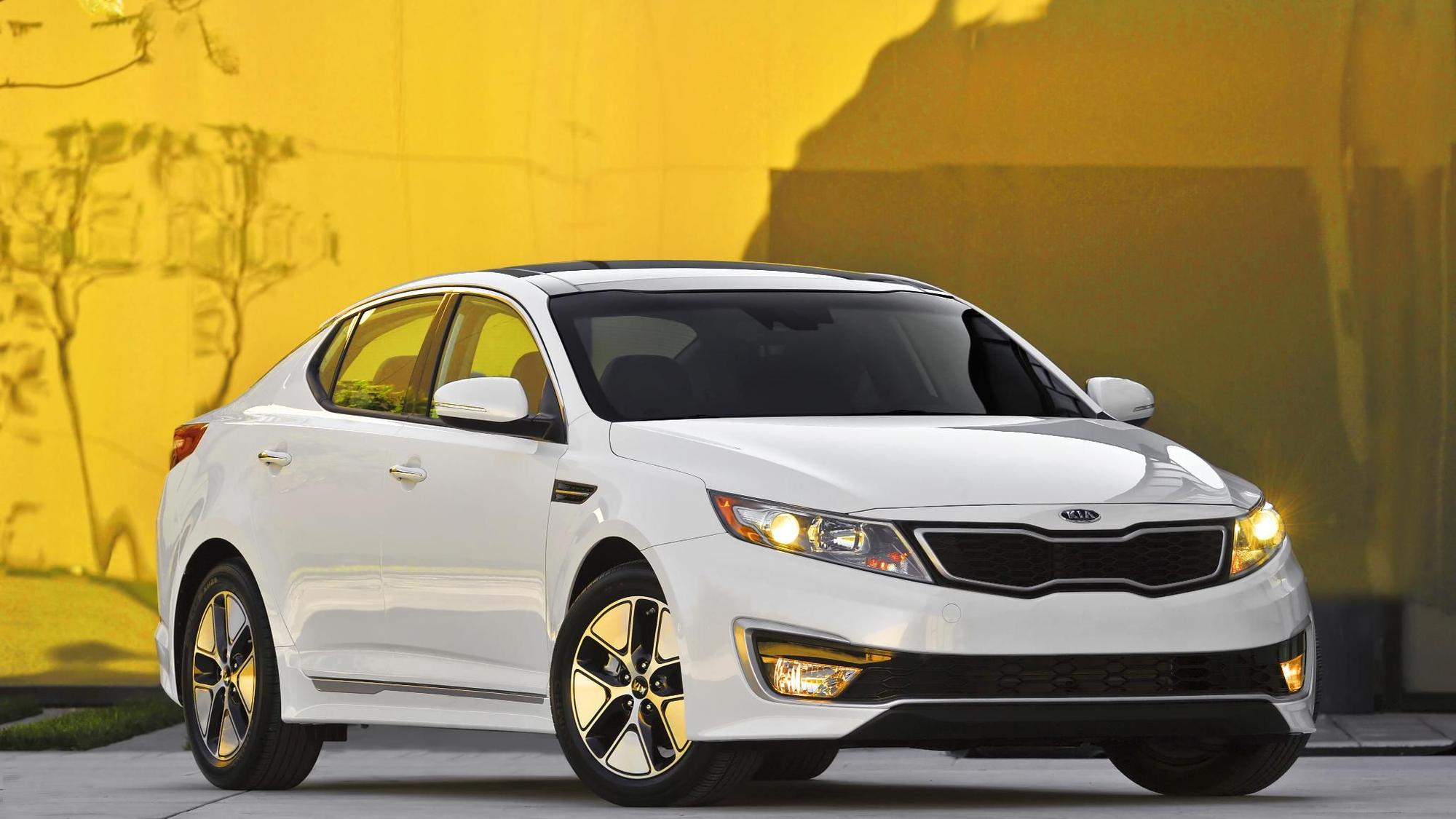
Even the gas engine contributed to early retirements. The 2.4L Theta II is infamous for engine knocking, oil burning, and in some cases, full engine failure, due to manufacturing defects that later prompted recalls and lawsuits.
We’re including the 2012–2014 Kia Optima Hybrid not because it lacked potential—it looked and felt like a serious hybrid competitor—but because it simply wasn’t built to last.
Many owners dumped these cars after one too many warning lights, or when they learned their hybrid warranty didn’t cover enough to make repairs worthwhile.
Today, it’s not uncommon to find these Optima Hybrids sitting dead in repair lots or sold for parts, their promising debut story ending far too soon.
3. 2011–2013 Hyundai Sonata Hybrid
The 2011–2013 Hyundai Sonata Hybrid was Hyundai’s first real attempt at entering the hybrid sedan market. Sharing a platform and drivetrain with the Kia Optima Hybrid, it arrived with modern styling, a generous feature list, and promises of up to 40 mpg.
But despite its competitive pricing and early buzz, the Sonata Hybrid turned out to be a deeply flawed vehicle, both mechanically and electronically—many simply didn’t survive past the five-year mark without major issues.
The drivetrain combined a 2.4L Theta II gas engine with a six-speed automatic transmission and an electric motor—a unique setup compared to the eCVTs used by most other hybrids.
Unfortunately, the integration of these systems was anything but smooth. Owners experienced harsh shifting, power delivery delays, and frequent “Hybrid System Warning” messages, often with no consistent or permanent fix.
Battery system problems were widespread. Premature degradation, inverter failures, and hybrid cooling system malfunctions created costly repair bills and headaches, particularly once warranties expired.
A large number of these vehicles entered limp mode or shut down unexpectedly, posing safety risks and earning the Sonata Hybrid a poor reputation for reliability.
Making matters worse, the Theta II gas engine had serious defects that extended across Hyundai’s lineup—oil starvation issues, piston slap, and even engine seizures were reported well below 100,000 miles.
Some owners were fortunate to receive new engines under recall campaigns, but others faced complete engine failure without much recourse.
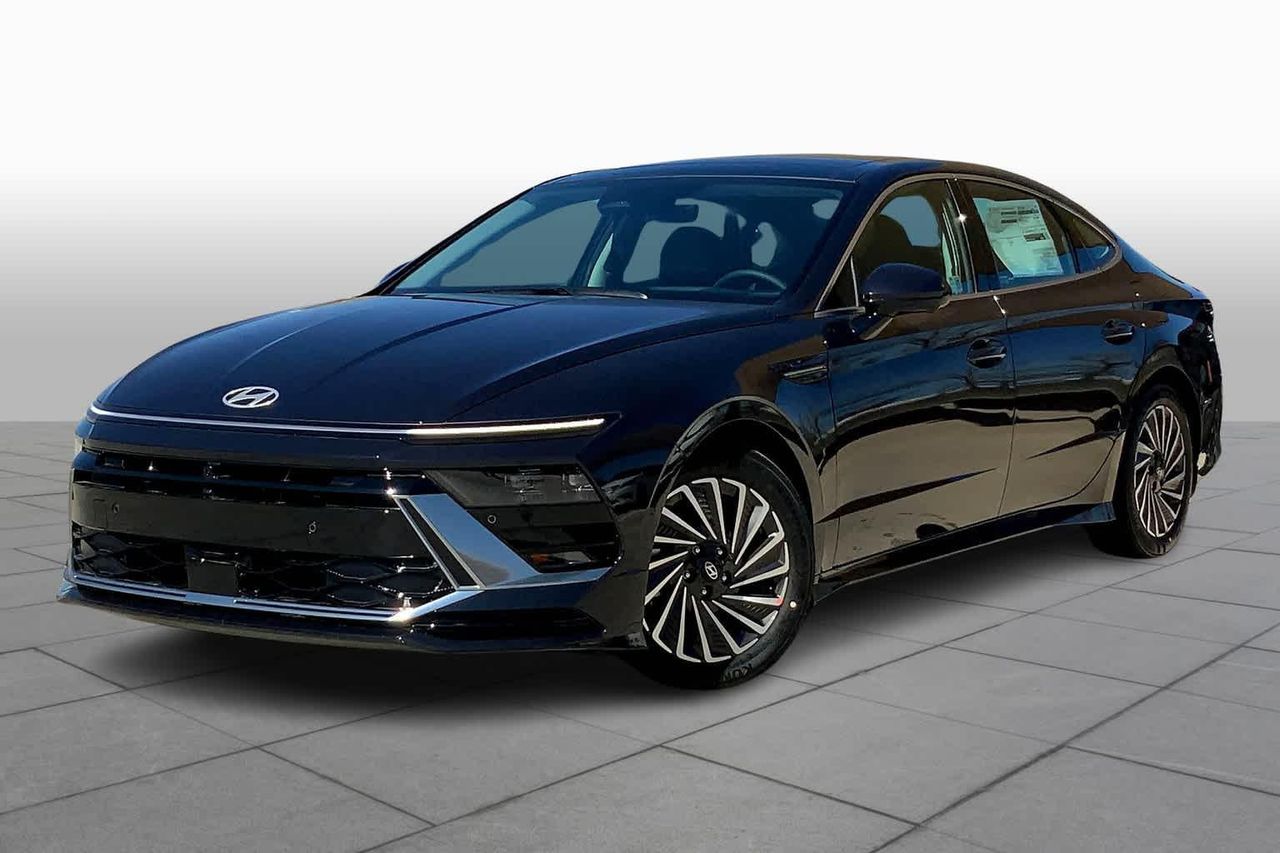
On top of mechanical issues, software bugs in the hybrid control unit led to erratic behavior. Several drivers reported the vehicle “surging” or hesitating at low speeds, often in stop-and-go traffic. For a car marketed as a fuel-efficient daily driver, it proved to be anything but smooth—or reliable.
We’re including the 2011–2013 Sonata Hybrid because it represents what happens when hybrid technology is rushed to market without long-term validation.
While Hyundai has come a long way since, this model serves as a warning for buyers: not all hybrids are created equal, and cutting corners in drivetrain calibration and software reliability can turn a promising sedan into early junkyard material.
4. 2008–2010 Chevrolet Tahoe Hybrid
The 2008–2010 Chevrolet Tahoe Hybrid was GM’s bold attempt to bring hybrid efficiency to the full-size SUV segment. On paper, it sounded like a breakthrough—an 8-passenger, V8-powered SUV that could deliver 21 mpg city, a major leap over the standard Tahoe.
But in practice, this hybrid experiment turned out to be an overcomplicated, underdeveloped failure that struggled to make it to 100,000 miles without major repairs.
At the heart of the problem was GM’s 2-Mode Hybrid system, which paired a 6.0L V8 engine with two 60kW electric motors integrated into a unique and complex transmission.
This system was advanced for its time, but unnecessarily complicated to repair. The hybrid transmission, in particular, was prone to failure, and few mechanics—dealerships included—had the training or tools to diagnose or fix issues accurately.
Battery failures were also common. Unlike the simpler, more modular designs from Toyota or Honda, GM’s battery system in the Tahoe Hybrid was large, heavy, and very expensive to replace—typically $4,000–$6,000, and that’s if you could even find one.
These costs often led owners to junk the vehicle instead of repairing it, especially if it was also suffering from suspension, steering, or engine problems.
Speaking of the engine, the 6.0L V8 had its own share of issues. Owners reported lifters collapsing, camshaft wear, and Active Fuel Management (AFM) malfunctions, which caused oil burning and low compression.
Combined with the weight and complexity of the hybrid system, the powertrain was more of a burden than a benefit.
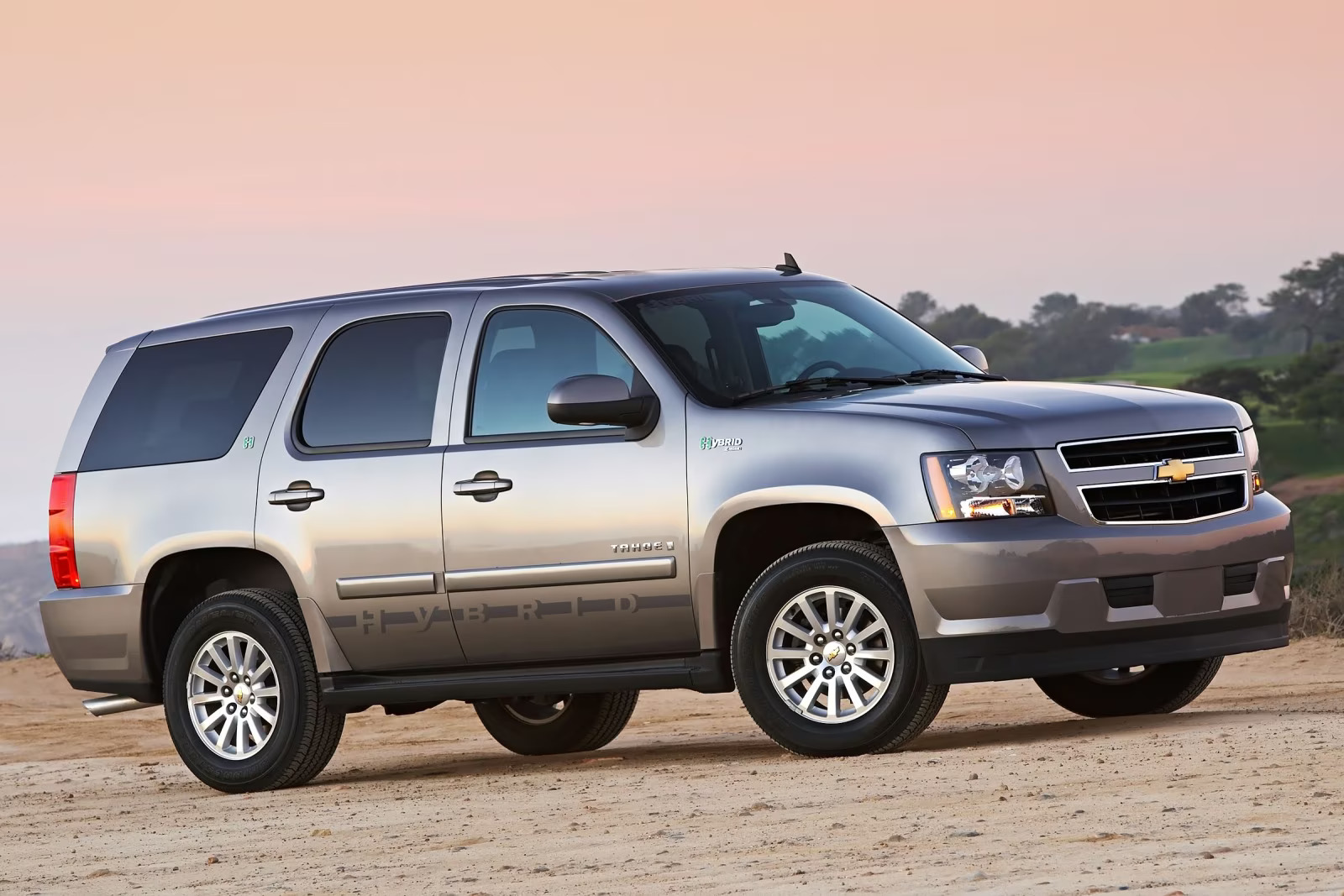
Fuel economy improvements were underwhelming in real-world use, and reliability was so inconsistent that fleet buyers, including municipalities and utility companies, began dumping these models early.
Interior components didn’t hold up well either—dash cracking, electronics glitches, and premature wear added to the sense that this was a poorly executed high-tech SUV.
We’re including the 2008–2010 Tahoe Hybrid because it represents how not to build a hybrid.
Overly ambitious, poorly supported, and cost-prohibitive to maintain, it quickly gained a reputation as a money pit. Today, it’s hard to find one on the road for a reason—most ended up in scrapyards long before their V8 counterparts.
5. 2013–2015 Ford C-Max Hybrid
The 2013–2015 Ford C-Max Hybrid was marketed as Ford’s direct competitor to the Toyota Prius, boasting better driving dynamics, a more traditional feel, and plenty of interior space.
On launch, it impressed reviewers with its quick acceleration, tech-forward interior, and EPA ratings of up to 47 mpg.
But as time passed, the C-Max’s glossy image unraveled, revealing a hybrid plagued with software bugs, drivetrain faults, and serious long-term durability concerns.
One of the biggest issues was battery reliability and system integration. The lithium-ion battery pack was more compact and lighter than Toyota’s proven NiMH units, but it suffered from early degradation, particularly in warmer climates or under regular stop-and-go traffic.
Many owners reported loss of electric range, battery cooling system failures, and repeated error messages related to battery health—even well before hitting 100,000 miles.
Making matters worse, Ford’s powertrain control software was riddled with glitches. The car would abruptly lose regenerative braking, hesitate during acceleration, or throw hybrid system warning lights with no clear fix.
Multiple technical service bulletins (TSBs) were issued, but updates only temporarily alleviated the problems. Some owners faced repeat visits to the dealership without resolution—an expensive and frustrating experience.
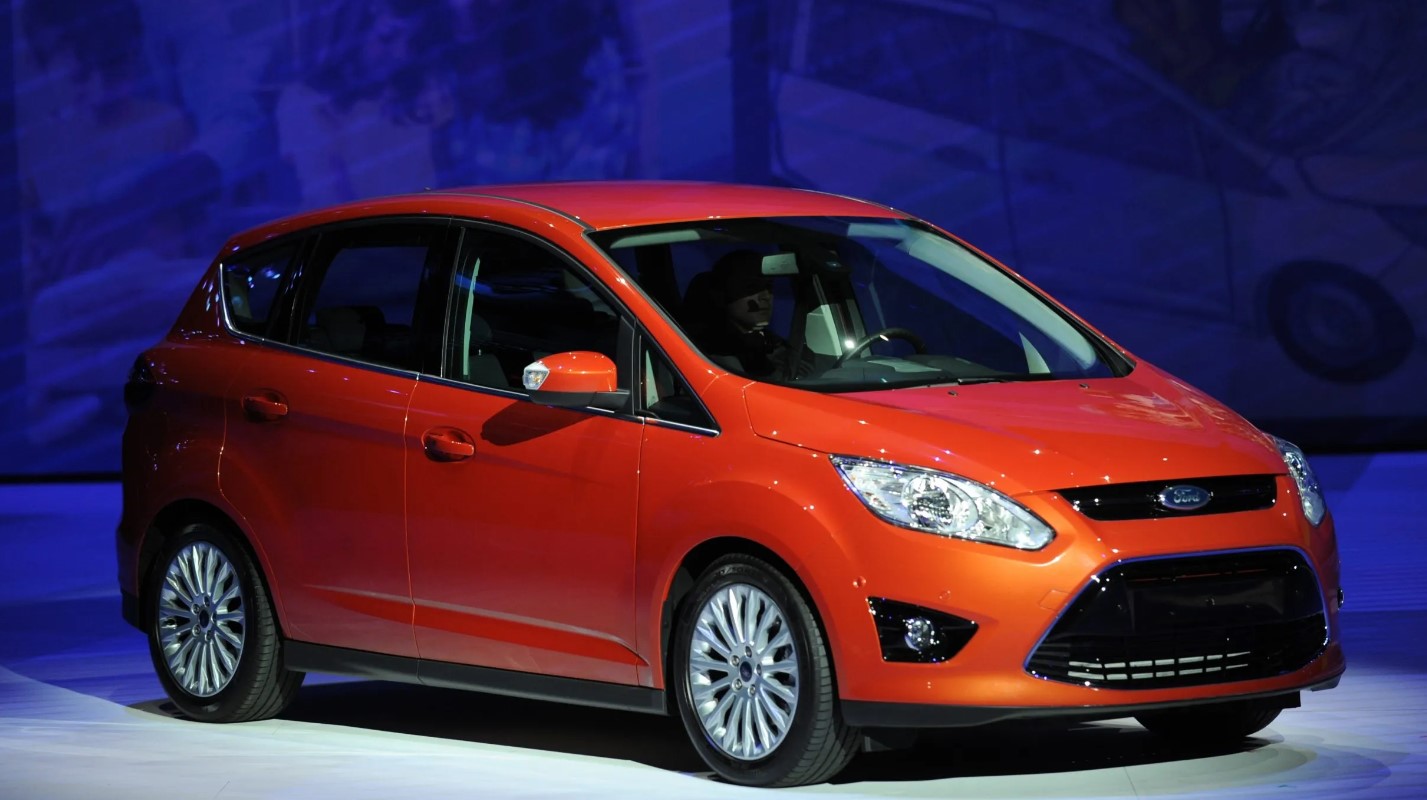
The CVT transmission, though not prone to failure in the same way as a conventional automatic, also developed a reputation for shuddering and uneven power delivery. Combined with cabin rattles, poor fit and finish, and rapid depreciation, the C-Max fell out of favor quickly with both buyers and reviewers.
Then came the EPA fuel economy downgrade scandal. Originally rated at 47 mpg, Ford was forced to lower the official ratings to 40 mpg city and 36 mpg highway, admitting its early estimates were inflated. This eroded trust further and left many owners feeling misled.
We’re including the 2013–2015 C-Max Hybrid because it stands as a reminder that specs on paper don’t guarantee long-term success.
Despite being positioned as a Prius-fighter, the C-Max didn’t have the mechanical polish or software reliability to last the long haul. Many of these cars were traded in or scrapped early, unable to deliver on their efficiency or dependability promises.
For a car that aimed high, the C-Max Hybrid ultimately landed in the junkyard far too soon.
Hybrid vehicles have evolved from quirky experiments into practical, fuel-saving daily drivers. But if there’s one lesson to take from this comparison, it’s that hybrid reliability is far from universal.
Some hybrids—like the Toyota Prius, Camry Hybrid, and Lexus RX 450h—have shown that fuel efficiency and durability can coexist. These models offer the peace of mind that comes from simple, proven engineering and years of real-world performance under tough conditions.
In contrast, other hybrids have become cautionary tales. The Ford Escape Hybrid, Hyundai Sonata Hybrid, and Kia Optima Hybrid were either rushed to market, poorly supported, or built with components that just couldn’t go the distance.
These vehicles, while innovative on paper, often suffered from battery failures, drivetrain issues, or integration flaws that made them impractical and expensive to own in the long term.
What separates a great hybrid from a regrettable one? In most cases, it’s engineering restraint and long-term support.
Toyota’s success stems from its decision to avoid overcomplicating things—choosing proven battery chemistries, simple hybrid layouts, and consistent software.
Meanwhile, some competitors chased innovation too quickly, delivering complex systems without robust testing or widespread technician support.
If you’re buying a hybrid today—especially used—do your homework. Check owner forums, review long-term reliability data, and prioritize models that have a track record for lasting beyond 150,000 miles without major repairs. A hybrid should save you money, not become a gamble after the warranty runs out.
Ultimately, this guide shows that hybrids can be a brilliant investment—but only when they’re built with long-term ownership in mind.
When manufacturers prioritize real-world reliability over marketing claims, drivers benefit for hundreds of thousands of miles. When they don’t, the result is a hybrid that’s efficient only until it breaks—and then painfully expensive to keep alive.
So, if you’re choosing a hybrid to last, make it one that’s already proven its worth on the long road ahead.
Also Read: 5 SUVs With the Least Expensive Wheel Straightening and 5 That’ll Empty Your Wallet

